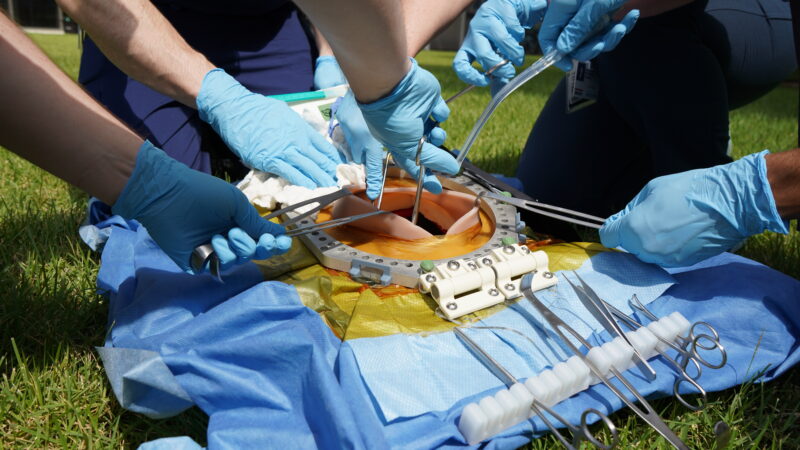News and Events
-
One of the most significant challenges in today’s ever-changing health care landscape is leveraging artificial intelligence (AI) while protecting patient privacy and supporting broader access to high-quality care. As the technology rapidly evolves, institutions at the forefront of innovation are turning to researchers who can bridge leading-edge engineering with real-world clinical impact. Associate professor at Texas A&M University School of Engineering Medicine (EnMed), Dr. Yanmin Gong’s innovative work in federated learning, a technology that enables hospitals to collaboratively train AI models without […]
-
One in five medical students experience some level of food insecurity, according to national surveys from the Journal of the American Medical Association (JAMA) Network. As Thanksgiving nears, the Texas A&M School of Engineering Medicine (EnMed) is demonstrating how compassion and innovation can work together to address one of the most basic human needs: access to food. Through the on-campus Pocket Pantry and the student-led […]
-
For medical students, learning neuroanatomy from a textbook is like trying to learn to drive from photographs; it’s technically accurate, but far from enough. The brain’s complexity demands more than flat images to truly learn it. Recognizing this gap, Texas A&M School of Engineering Medicine (EnMed) student Duncan Salmon decided not to just struggle through […]
-
Designing medical prototypes that are small enough to operate within the human body—yet strong and precise enough for surgical use—poses a unique challenge. This challenge gets even more difficult when working with metals such as stainless steel and nitinol wire. Both are stiff and hard to manipulate, requiring special tools for bending, cutting, or shaping. […]
-
EnMed in the News
Texas A&M Develops New Nerve Detection Technologies To Aid Surgeries











